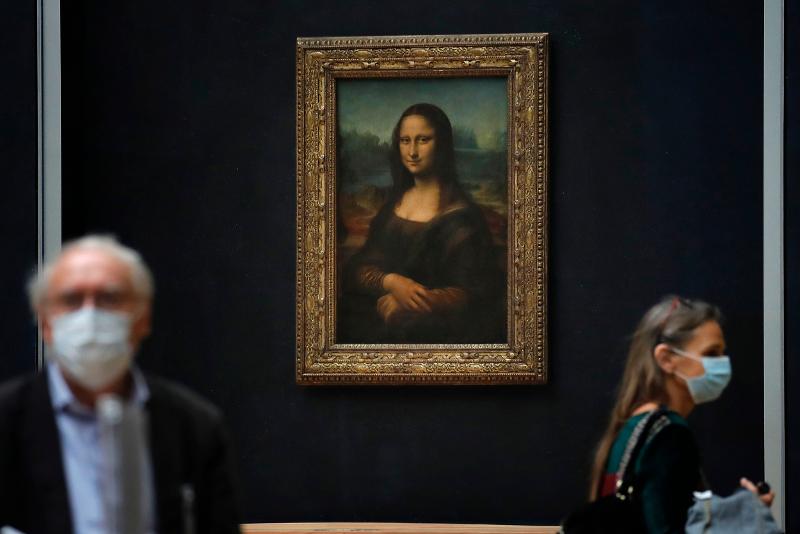The 'Mona Lisa' has long captivated art enthusiasts with its enigmatic smile. Now, using X-rays, scientists have delved into the chemical structure of this iconic painting, uncovering new secrets about Leonardo da Vinci's techniques. In this article, we will explore the groundbreaking research that sheds light on the artist's experimental nature and his distinctive approach to creating the masterpiece.
The Curious Nature of Leonardo da Vinci
Explore the experimental mindset of Leonardo da Vinci and his unique approach to art.
Leonardo da Vinci was a true Renaissance man, known for his insatiable curiosity and love for experimentation. His paintings, including the iconic 'Mona Lisa,' showcase his innovative techniques and constant desire to push the boundaries of art.
With each artwork, Leonardo approached the canvas with a fresh perspective, utilizing different materials, pigments, and methods. This article delves into the experimental nature of Leonardo da Vinci and how it manifested in his groundbreaking portrait of the 'Mona Lisa.'
Unveiling the Chemical Secrets
Discover how X-ray analysis has provided new insights into Leonardo da Vinci's painting techniques.
Using X-rays, scientists have been able to peer into the chemical structure of the 'Mona Lisa,' uncovering fascinating details about Leonardo's painting methods. By analyzing a tiny speck of the painting, researchers have gained valuable insights into the composition of the artwork.
The research, published in the Journal of the American Chemical Society, reveals that Leonardo used a unique oil-paint recipe as the base layer for the 'Mona Lisa.' This discovery sheds light on his meticulous approach to creating the masterpiece.
A Distinctive Ground Layer
Explore the distinctive chemical signature found in the ground layer of the 'Mona Lisa.'
The ground layer of the 'Mona Lisa' has its own unique chemical signature, different from Leonardo's other works. The researchers discovered a rare compound called plumbonacrite in the first layer of paint, confirming that Leonardo most likely used lead oxide powder to thicken and dry his paint.
This finding not only provides valuable insights into Leonardo's techniques but also highlights his constant experimentation as a painter. Each of his paintings was a unique technical endeavor, showcasing his mastery and innovation.
The Significance of Plumbonacrite
Learn about the significance of plumbonacrite and its role in Leonardo da Vinci's paint recipe.
Plumbonacrite, a byproduct of lead oxide, was found in the 'Mona Lisa' and is considered a fingerprint of Leonardo's recipe. This compound confirms that he used lead oxide powder to create a thicker and faster-drying paste for his paint.
Interestingly, this technique was not unique to Leonardo. Dutch master Rembrandt also used a similar recipe in the 17th century, indicating that these painting methods were passed down through generations of artists.
The Golden Oil Paint
Discover how Leonardo da Vinci's oil paint recipe created a beautiful golden hue.
Leonardo dissolved lead oxide powder in linseed or walnut oil, creating a thicker and faster-drying paste. This resulted in an oil with a beautiful golden color, flowing like honey on the canvas.
The use of this golden oil paint added depth and richness to the 'Mona Lisa,' enhancing the overall aesthetic appeal of the artwork.
Unending Discoveries
Reflect on the continuous exploration of Leonardo da Vinci's techniques and the mysteries that still remain.
While the recent research has provided valuable insights into Leonardo da Vinci's techniques for the 'Mona Lisa,' there is still much more to discover. The world of art is constantly evolving, and each new discovery adds another piece to the puzzle of Leonardo's genius.
As scientists and art historians continue to delve into the mysteries of Leonardo's art, we can only marvel at his innovative spirit and the timeless beauty of the 'Mona Lisa.'
Conclusion
The research on Leonardo da Vinci's 'Mona Lisa' has provided fascinating insights into the artist's experimental nature and unique painting techniques. Through the use of X-rays, scientists have uncovered the distinctive chemical signature of the ground layer, confirming Leonardo's use of lead oxide powder. This discovery highlights his constant desire to push the boundaries of art and showcases his mastery and innovation.
While we have gained valuable knowledge about Leonardo's techniques, there is still much more to discover. The world of art is ever-evolving, and each new revelation adds to the intrigue and wonder surrounding the 'Mona Lisa' and Leonardo da Vinci's genius.
FQA
What did the X-ray analysis reveal about the 'Mona Lisa'?
The X-ray analysis revealed the distinctive chemical signature of the ground layer, confirming Leonardo's use of lead oxide powder in his paint recipe.
Why is plumbonacrite significant?
Plumbonacrite is a byproduct of lead oxide and serves as a fingerprint of Leonardo's recipe. Its presence in the 'Mona Lisa' confirms his use of lead oxide powder to create a thicker and faster-drying paste for his paint.
What is the significance of Leonardo's oil paint recipe?
Leonardo's oil paint recipe, which involved dissolving lead oxide powder in linseed or walnut oil, created a beautiful golden hue that added depth and richness to the 'Mona Lisa.'
Are there more discoveries to be made about Leonardo's techniques?
Yes, the recent research has provided valuable insights, but there is still much more to discover. The world of art is constantly evolving, and each new discovery adds another piece to the puzzle of Leonardo's genius.

